Oldest Temples in Tamil Nadu
Tamil Nadu a state renowned for its rich cultural heritage, is home to some of the oldest and most architecturally stunning temples in India. These temples, many of which date back to ancient times, are not only religious centres but also masterpieces of Dravidian architecture. In this article, we will explore the historical significance and architectural marvels of the oldest temples in Tamil Nadu.
1. Srirangam Ranganathaswamy Temple
The Srirangam Ranganathaswamy Temple was built as a small temple complex in 100 BCE at Sringaram. Dedicated to Lord Vishnu, is one of the largest and most active temple complexes in India. Located on an island in the Kaveri River, this temple is renowned for its vast enclosure walls, numerous gopurams, and highly ornate architectural features. The temple’s layout includes seven concentric enclosures and 21 gopurams. The Ranganathaswamy Temple is celebrated for its intricate sculptures and the architectural brilliance of its ‘Rajagopuram’ (main tower), which stands at an impressive height of 72 meters (236 feet). The temple is also significant for its role in Vaishnavism and the influence of the Alvars.
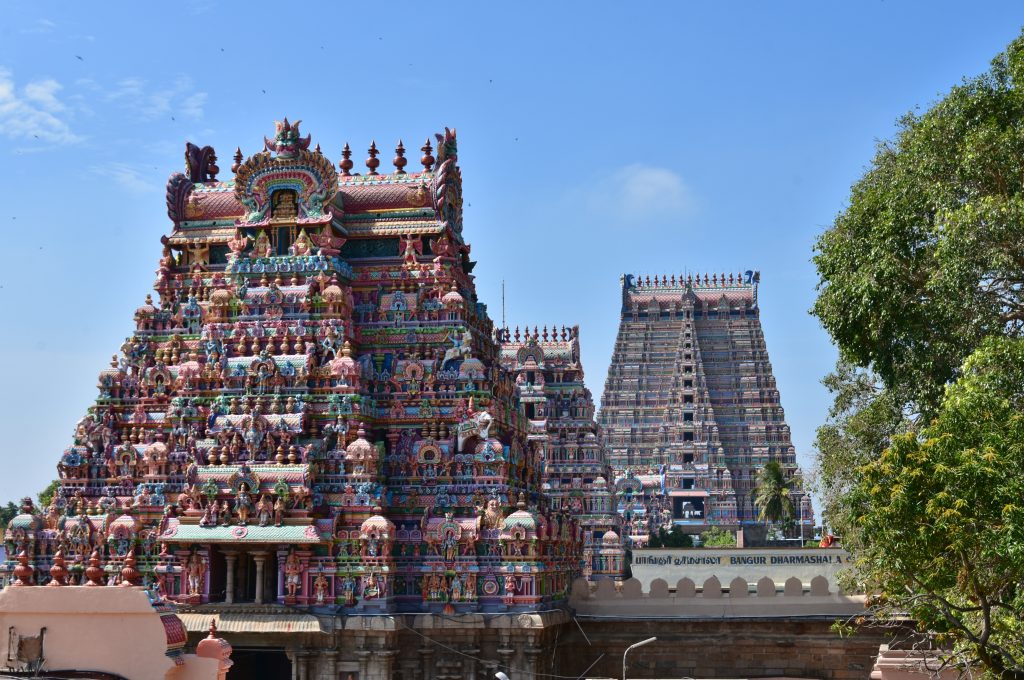
2. Ekambareswarar Temple
The Ekambareswarar Temple in Kanchipuram was built in Kanchipuram and has existed since 600 CE. Dedicated to Lord Shiva, is one of the Pancha Bhoota Stalams, representing the element of Earth. The temple is noted for its grand architecture, including a massive 59-meter (193-feet) tall gopuram and a large central courtyard. The temple’s most notable feature is its sacred mango tree, believed to be more than 3,000 years old. The Ekambareswarar Temple temple complex includes several intricately carved mandapams and a large tank known as the ‘Sivaganga Tank,’ which is associated with various legends. The Ekambareswarar Temple’s architecture reflects the grandeur of the Chola and Vijayanagara periods.

3. Meenakshi Amman Temple
The Meenakshi Amman Temple is located in Madurai. It is dated to the 6th Century CE, although it was renovated extensively in the 14th century CE. Dedicated to the goddess Meenakshi, an avatar of Parvati, this temple is renowned for its stunning gopurams (gateway towers), each intricately adorned with sculptures of gods, goddesses, and mythological figures. The temple complex is vast, covering 14 acres and featuring 12 gopurams, with the tallest one reaching 51.9 meters (170 feet). The temple’s hall, known as the Meenakshi Hall, boasts 1,000 intricately carved pillars, a testament to the exceptional craftsmanship of its builders.
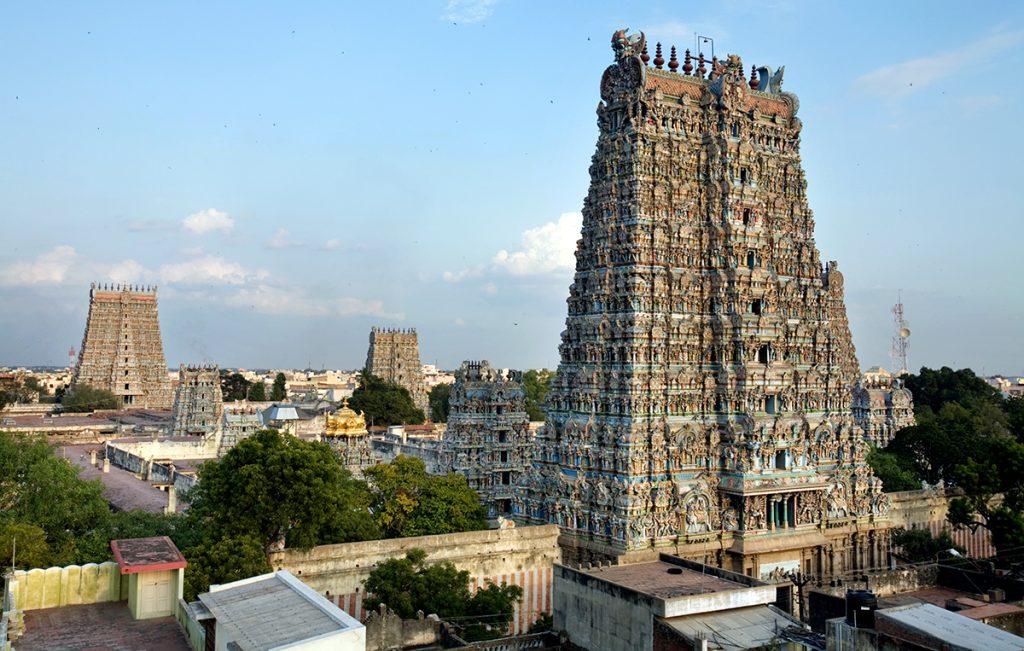
4. Chidambaram Nataraja Temple
The Chidambaram Nataraja Temple in Chidambaram existed in 6th-century texts, as evidenced by prehistoric texts. However, the city was not known as such. It is dedicated to Lord Shiva in his form as Nataraja, the cosmic dancer. This temple is unique for its representation of Shiva’s dance, symbolizing the cosmic cycles of creation and destruction. The temple’s architecture is characterized by its five gopurams and the sanctum sanctorum. The temple is renowned for its intricate bronze sculptures, particularly the famous Nataraja idol, which depicts Shiva performing the ‘Ananda Tandava’ (Dance of Bliss). Chidambaram Nataraja Temple’s unique feature is its balance of art, ritual, and dance.
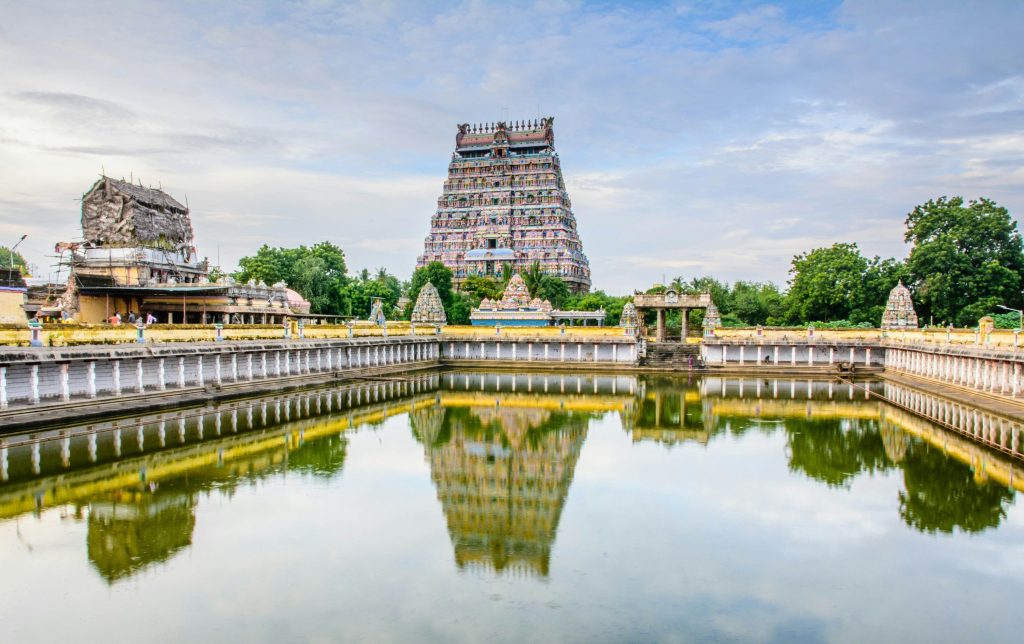
5. Kanchi Kailasanathar Temple
The Kanchi Kailasanathar Temple was constructed in 700 CE in Kanchipuram. It is dedicated to Lord Shiva during the Pallava dynasty. This temple is noted for its simplicity and elegance, featuring a rectangular layout and a series of small shrines arranged around a central sanctum. The Kanchi Kailasanathar Temple is constructed from sandstone. Its unique feature is the series of well-executed carvings of Hindu deities and mythological figures that adorn the walls. The temple’s layout and design laid the groundwork for later developments in Dravidian temple architecture.
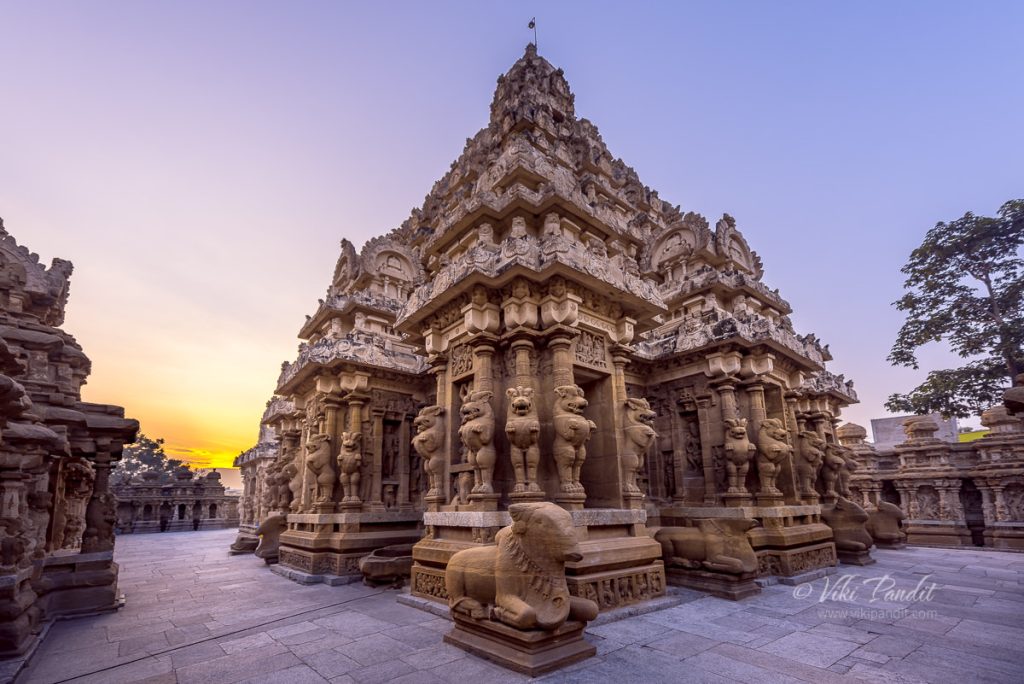
6. Shore Temple
The Shore Temple in Mahabalipuram was constructed in 725 CE, during the reign of the Pallava dynasty, Located on the shore of the Bay of Bengal, this temple complex is named for its proximity to the sea. The Shore Temple is the earliest example of stone temple in South India. The complex consists of three temples: a central shrine dedicated to Shiva and two smaller shrines dedicated to Vishnu. The temple is renowned for its granite construction and its distinctive pyramidal shape, with intricate carvings that depict various deities and mythological scenes.
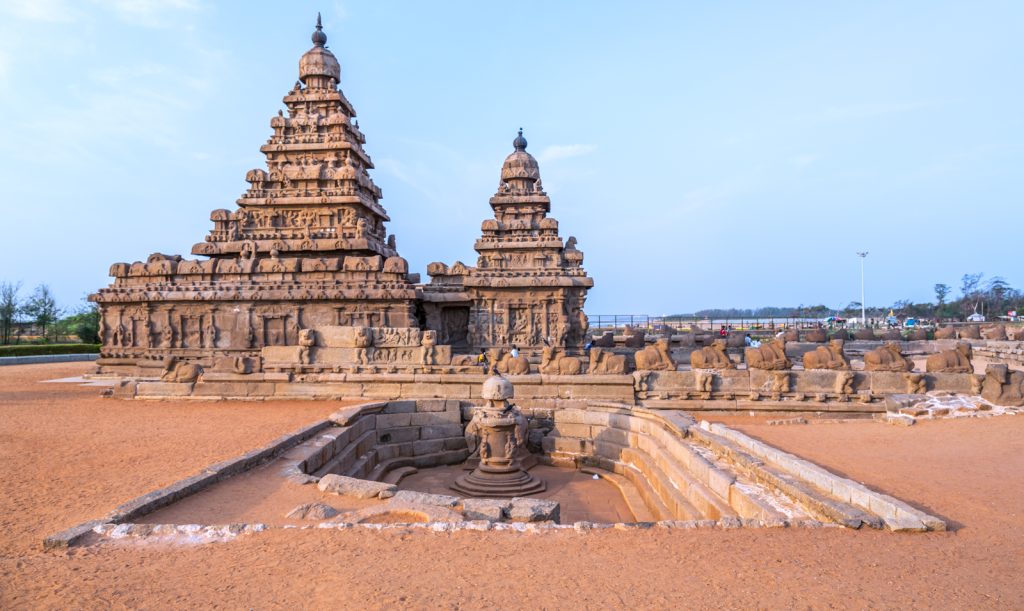
7. Adi Kumbeswarar Temple
The 7th-century Adi Kumbeswarar Temple in Kumbakonam is dedicated to Lord Shiva. This ancient temple, dating back to the Chola period, is known for its grand gopuram and elaborate carvings. The temple’s architecture welcomes you with a series of ‘mandapams’ (pillared halls) and a central sanctum. The Adi Kumbeswarar Temple’s most notable feature is its elaborate sculptures depicting scenes from Hindu mythology and the divine marriage of Shiva and Parvati. The temple is also famous for the Mahamaham festival, which attracts thousands of pilgrims every 12 years.
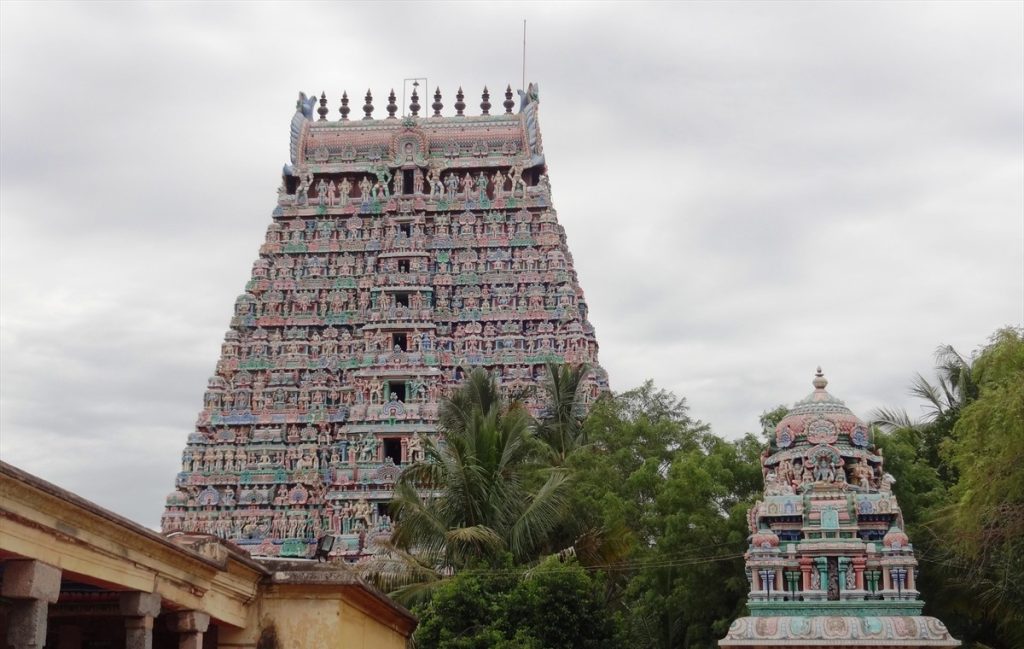
8. Arunachalesvara Temple
The Arunachalesvara Temple in Tituvannamalai was built in the 9th century CE. Dedicated to Lord Shiva, is located at the base of the sacred Arunachala Hill. The temple’s architecture is characterized by its large, ornate gopurams and extensive mandapams. The central sanctum houses the Shiva lingam, and the Arunachalesvara Temple’s complex includes several smaller shrines and tanks. The temple is particularly famous for its annual Karthigai Deepam festival, during which a massive flame is lit on the hill to symbolize the presence of Shiva.

9. Ramanathaswamy Temple
The Ramanathaswamy Temple was built in Rameswaram in the 12th century, although a ‘shivalinga’ existed beforehand. Dedicated to Lord Shiva, this temple is famous for its long corridors and massive courtyard. The temple features the longest corridor in India, stretching over 1,200 meters (3,937 feet), supported by 1,008 intricately carved columns. The architecture of the Ramanathaswamy Temple reflects a blend of Dravidian and Indo-Saracenic styles, with a stunning array of sculptures and carvings. The temple’s unique feature is its 22 holy wells, each believed to have water with different medicinal properties.
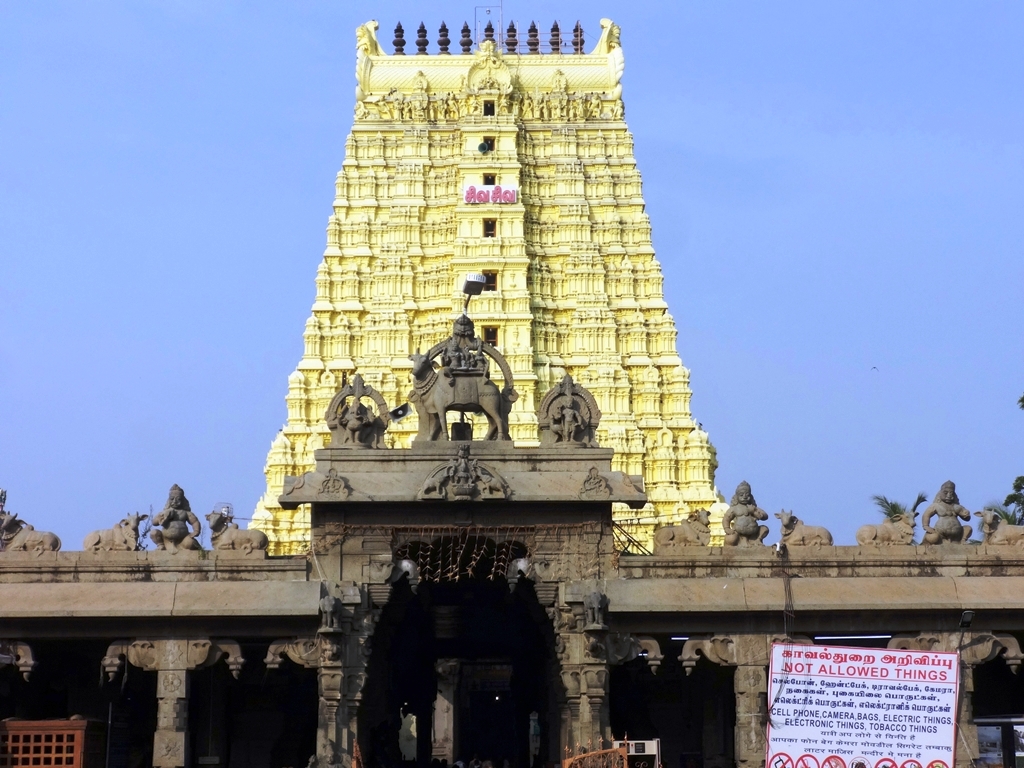
10. Brihadishvara Temple
The Brihadishvara Temple was built between 1003 and 1010 in Thanjavur. It is also known as the Peruvudaiyar Kovil is a UNESCO World Heritage site and a prime example of Chola architecture. Constructed by Rajaraja Chola I, this temple is dedicated to Lord Shiva and is renowned for its enormous ‘vimana’ (tower) and ‘colossal Nandi’ (bull) statue. The temple’s central dome is one of the largest in the world, made from a single granite stone. The Brihadishvara Temple’s architecture features a grand entrance hall with beautifully sculpted pillars and an expansive courtyard.

Image Courtesy – Wikipedia






